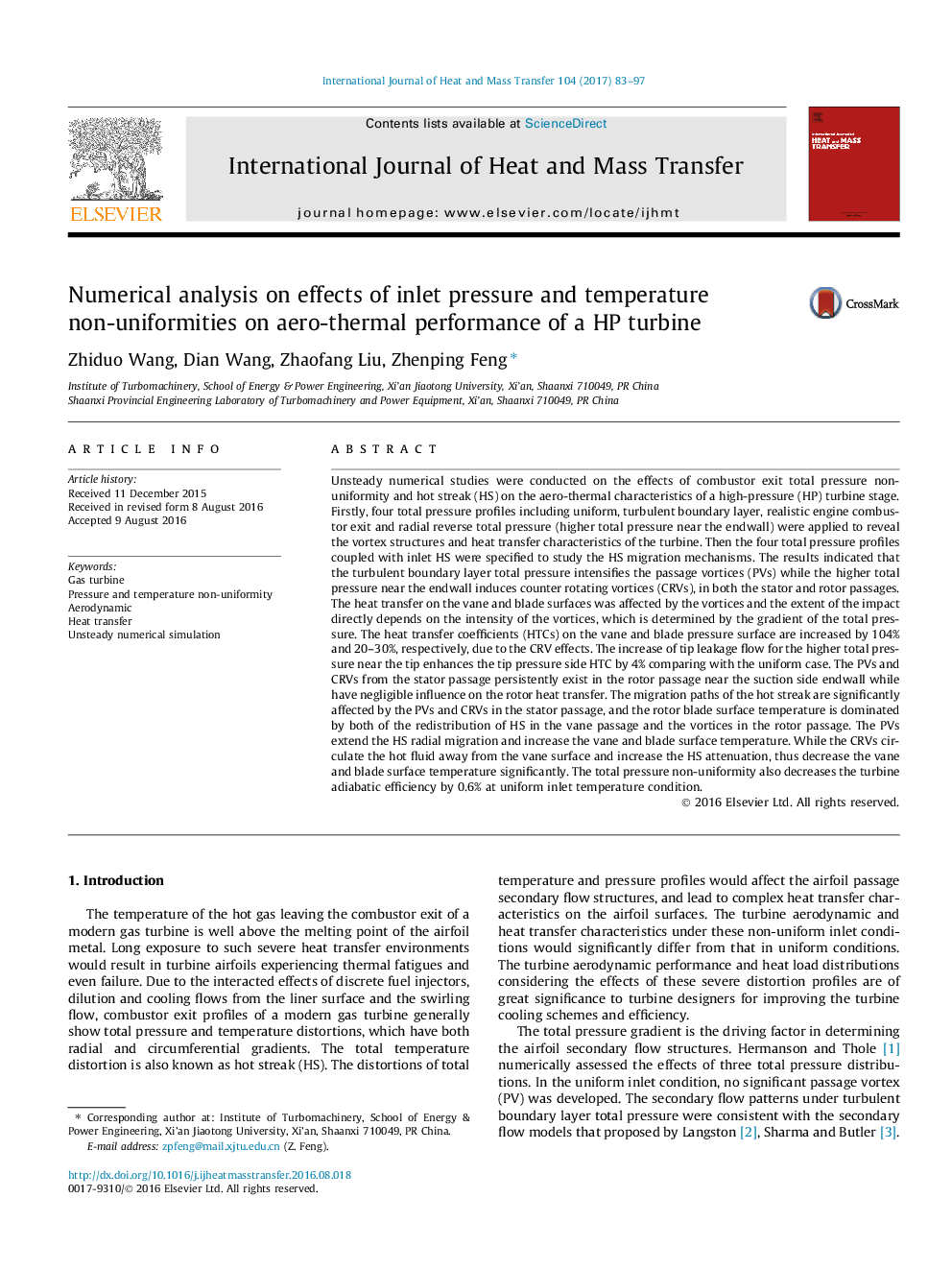| کد مقاله | کد نشریه | سال انتشار | مقاله انگلیسی | نسخه تمام متن |
|---|---|---|---|---|
| 656324 | 1458038 | 2017 | 15 صفحه PDF | دانلود رایگان |
• The pressure non-uniformity induces PVs or CRVs in both the stator and rotor passages.
• The CRVs increase the vane and blade HTC by 104% and 20–30%, respectively.
• Higher total pressure near the tip enhances the tip leakage flow and increases the tip HTC by 4%.
• The HS migration path is altered and the airfoil temperature is increased by the PV and decreased by the CRV.
Unsteady numerical studies were conducted on the effects of combustor exit total pressure non-uniformity and hot streak (HS) on the aero-thermal characteristics of a high-pressure (HP) turbine stage. Firstly, four total pressure profiles including uniform, turbulent boundary layer, realistic engine combustor exit and radial reverse total pressure (higher total pressure near the endwall) were applied to reveal the vortex structures and heat transfer characteristics of the turbine. Then the four total pressure profiles coupled with inlet HS were specified to study the HS migration mechanisms. The results indicated that the turbulent boundary layer total pressure intensifies the passage vortices (PVs) while the higher total pressure near the endwall induces counter rotating vortices (CRVs), in both the stator and rotor passages. The heat transfer on the vane and blade surfaces was affected by the vortices and the extent of the impact directly depends on the intensity of the vortices, which is determined by the gradient of the total pressure. The heat transfer coefficients (HTCs) on the vane and blade pressure surface are increased by 104% and 20–30%, respectively, due to the CRV effects. The increase of tip leakage flow for the higher total pressure near the tip enhances the tip pressure side HTC by 4% comparing with the uniform case. The PVs and CRVs from the stator passage persistently exist in the rotor passage near the suction side endwall while have negligible influence on the rotor heat transfer. The migration paths of the hot streak are significantly affected by the PVs and CRVs in the stator passage, and the rotor blade surface temperature is dominated by both of the redistribution of HS in the vane passage and the vortices in the rotor passage. The PVs extend the HS radial migration and increase the vane and blade surface temperature. While the CRVs circulate the hot fluid away from the vane surface and increase the HS attenuation, thus decrease the vane and blade surface temperature significantly. The total pressure non-uniformity also decreases the turbine adiabatic efficiency by 0.6% at uniform inlet temperature condition.
Journal: International Journal of Heat and Mass Transfer - Volume 104, January 2017, Pages 83–97
